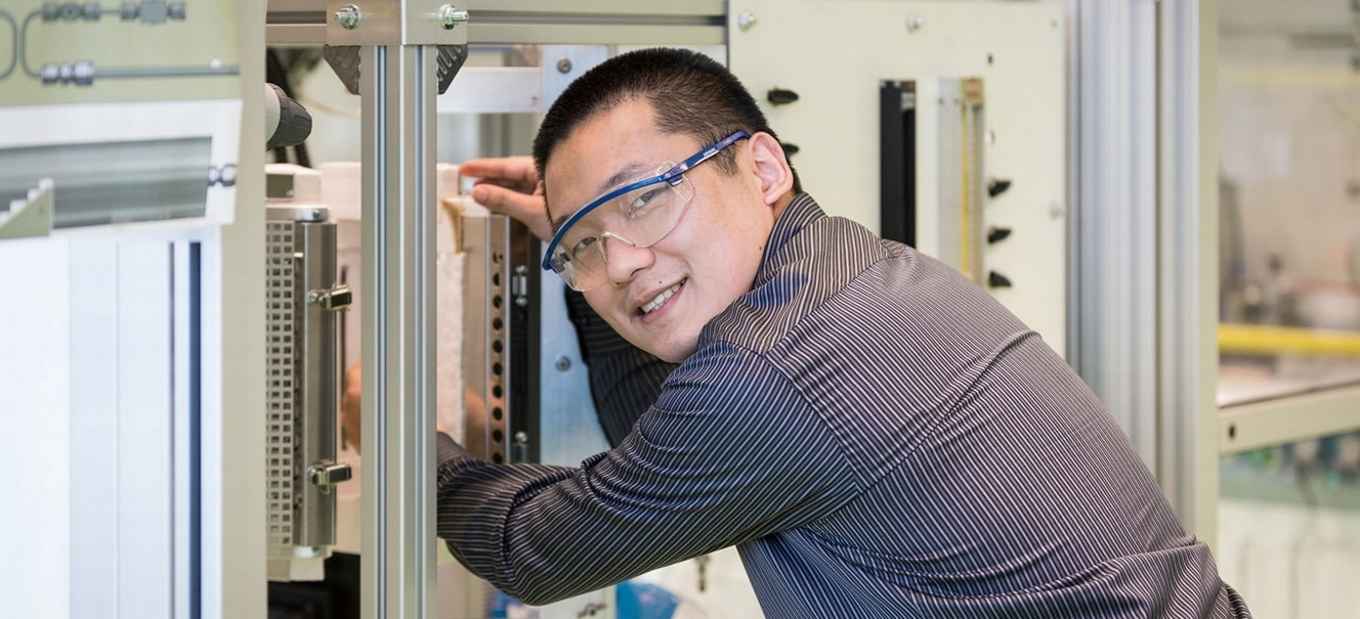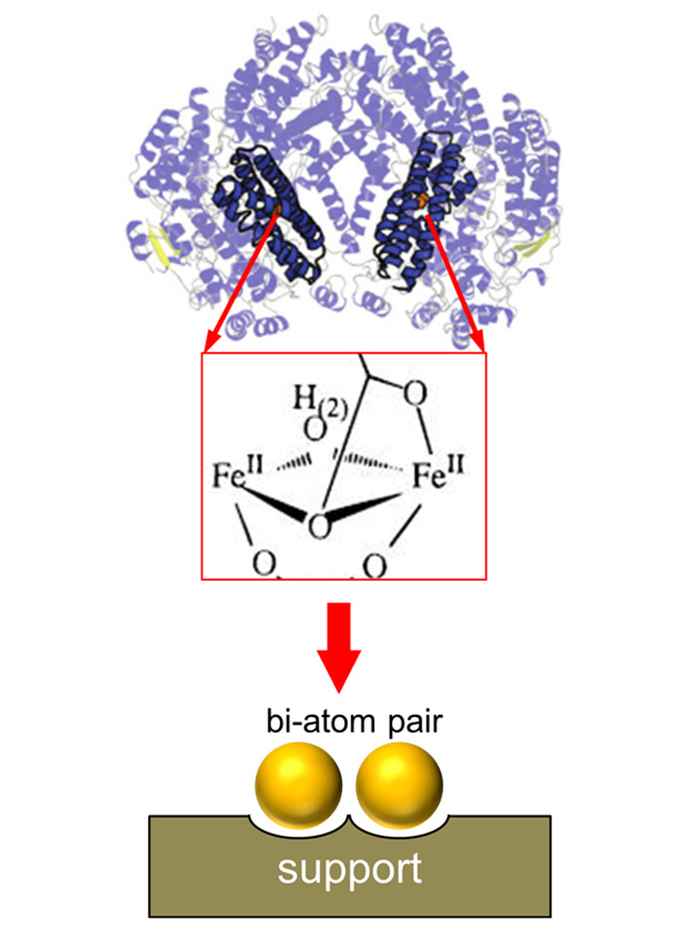Vidi grant for Ning Yan
24 May 2019

The rational design of catalysts features high on the wish list of both academia and industry, looking for highly efficient chemical conversions that minimize waste production and energy consumption. In the so-called heterogeneous catalysis using supported catalysts, chemical conversions often occur at the interface of metallic nanoparticles, some of which are rare and costly. Because the active site of many catalytic reactions only involves isolated atoms, recent research in heterogeneous catalysis has been focusing on downsizing the conventional supported nanometric materials to 'single atom' catalysts. Since such an atomic configuration offers superior catalytic performance in various reactions of industrial relevance, this research field is becoming a 'hotspot' in catalysis research.
Inspired by Nature
In his research proposal now awarded with a Vidi grant, Ning Yan was inspired by Nature where many enzymatic conversions also depend on a pair of metal atoms as the active site.

A typical example is the enzyme methane monooxygenase that features a di-nuclear iron centre which works cooperatively to ensure high activity and selectivity towards the conversion of methane to methanol. Such high performance can be hardly achieved using a synthetic catalyst. The central focus in Ning Yan's Vidi research will, therefore, be on developing homoatomic and heteroatomic bi-atom catalysts (BAC). These novel materials will share the advantages of both homogenous and heterogeneous catalysts, opening up new opportunities in catalysis research.
Towards sustainable energy
The performance of BACs will be studied in the activation of O2 at ambient conditions, in the electrochemical oxygen reduction which requires the contribution of a dinuclear active site. This reaction is the critical half-reaction in many electrochemical devices such as fuel cells, metal-air batteries and bio-sensors. Yet, it involves the transfer of four protons and four electrons and is therefore very sluggish. Now only noble metal catalyst can facilitate the reactions, which hampers the real-life application of those devices. In theory, BACs could substantially minimize the usage of noble metal and provide the opportunity of precisely tuning the properties of the active centre. Adding to this, Ning Yan's wants to understand and reveal the possible cooperative catalysis effects of the bi-atom pair, applying advanced characterization techniques such as in-situ Raman, IR and X-ray absorption spectroscopy.

Dr Ning Yan joined the University of Amsterdam in 2014 after more than four years of research on solid oxide fuel cells at the University of Alberta in Canada. He is a tenure-track assistant professor at the Van ’t Hoff Institute for Molecular Sciences, working in the UvA's Research Priority Area Sustainable Chemistry on (electro)catalyst design and development for clean energy applications, including fuel cells, supercapacitors and CO2 valorizations. His research interests are in developing high-performance yet robust metallic nanomaterials, perovskite oxides, and porous carbons